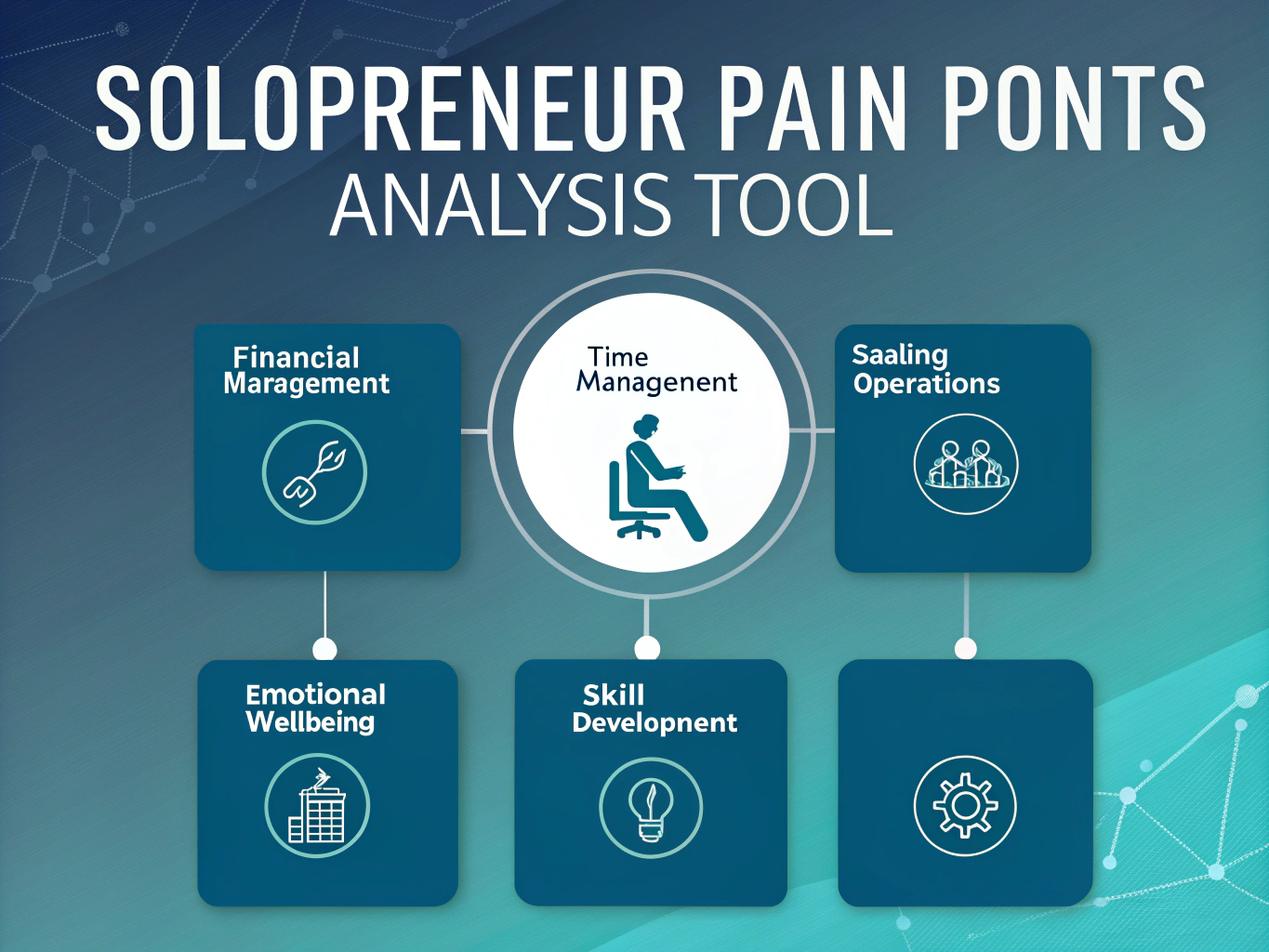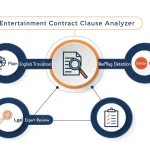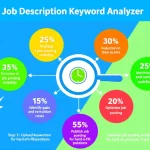Solopreneur Pain Points Analysis
Is this tool helpful?
How to Use the Solopreneur Pain Points Analysis Tool Effectively
Follow these steps to get the most precise and useful insights from the Solopreneur Pain Points Analysis Tool:
- Enter your solopreneur niche or industry (optional): Use the text field to specify the particular type of solopreneur you want to analyze. This customizes the results for your unique challenges. Examples include “independent yoga instructor” or “custom furniture maker.”
- Click the “Analyze Solopreneur Pain Points” button: Submit your input to receive a thorough analysis of common challenges, emotional hurdles, and operational difficulties that solopreneurs in your field encounter.
- Review the detailed pain points report: The tool presents a breakdown of obstacles like financial issues, scaling barriers, productivity roadblocks, and emotional strain tailored to your specified niche.
- Copy your personalized results: Use the copy feature to save or share the insights with mentors, peers, or advisors for further discussion and planning.
Providing a specific industry improves the quality of your analysis. For example, entering “freelance app developer” might highlight challenges around managing client expectations and project deadlines, while “handmade skincare product seller” could focus more on regulatory issues and sourcing materials.
Introduction to the Solopreneur Pain Points Analysis Tool
The Solopreneur Pain Points Analysis Tool helps you identify the common challenges faced by solo business owners in various industries. It uses data-driven insights and real-world experiences to generate a targeted report based on your input, allowing you to better understand and prepare for hurdles you will likely encounter.
Purpose and Benefits
- Customized insights: Receive analysis specific to your solopreneur niche.
- Clear overview of challenges: Understand issues like cash flow management, client acquisition, and emotional well-being.
- Actionable strategies: Get suggestions to effectively address the pain points identified.
- Time-saving resource: Use the tool to cut down on research time and start planning smarter.
- Better decision-making: Use insights to allocate resources and set priorities confidently.
Practical Usage of the Solopreneur Pain Points Analysis Tool
This tool offers practical help by tailoring advice to your specific solopreneur journey. Here are several ways you can apply its insights:
1. Business Planning and Strategy Improvement
Use the analysis to anticipate common roadblocks in your niche and develop strategies early. For example, a solopreneur launching a home cleaning service might learn about managing fluctuating client demand and can plan promotions during slow seasons.
2. Skill Development Focus
The tool highlights which skills you should prioritize. If the report shows marketing as a common challenge for freelance photographers, you can focus on developing marketing techniques to grow your client base.
3. Networking and Mentorship Guidance
Identify specific areas where mentorship or peer support helps most. For instance, solopreneurs facing pricing challenges might benefit from networking with experienced professionals or attending business workshops.
4. Financial Planning and Management
The tool flags typical financial pain points such as irregular income or tax obligations. Solopreneurs can then arrange appropriate budgeting tools or consult accountants in advance.
5. Work-Life Balance Optimization
Spot common burnout risks and implement boundaries. Social media managers may learn to set strict working hours and use scheduling apps to maintain flexibility without fatigue.
6. Product and Service Development
Discover scaling challenges in your field and create offerings that maximize profitability without overwhelming time commitments, such as digital courses or group sessions.
7. Marketing and Branding Enhancement
Use the pain points identified to refine your marketing messages. For example, business coaches can emphasize helping clients manage overwhelm and improve productivity, directly addressing common struggles.
Common Solopreneur Challenges and Tool Tips
Financial Management Difficulties
Many solopreneurs face inconsistent cash flow or struggle with pricing. For example, freelance consultants often deal with irregular billing cycles. The tool recommends setting clear payment terms and possibly offering retainers to stabilize income.
Time Management and Productivity
Balancing tasks demands strong time management. Virtual event planners often juggle multiple projects simultaneously. The tool suggests using techniques like time-blocking or automation tools to streamline operations.
Scaling Your One-Person Business
Solo entrepreneurs looking to grow may hit capacity limits. Independent app developers are advised to outsource coding or QA tasks and create scalable workflows early.”
Isolation and Loneliness
Feeling isolated is common among freelancers and solo workers. Joining industry forums, local coworking spaces, or scheduling peer check-ins can help combat loneliness.
Overcoming Self-Doubt and Imposter Syndrome
New coaches and creatives frequently face imposter syndrome. The tool encourages keeping a success journal and pursuing continuous learning to build confidence.
Frequently Asked Questions About the Solopreneur Pain Points Analysis Tool
Q1: How often should I use this tool?
Use the tool when you start your solopreneurship and revisit it annually or whenever you shift your business focus or enter a new market. Regular use keeps you updated on evolving challenges.
Q2: Can I use this tool before launching my business?
Yes, early use helps you prepare and build effective strategies before launching, giving you a strong foundation to face expected challenges.
Q3: What data powers the analysis?
The tool combines insights from industry studies, entrepreneur case studies, and anonymized solopreneur experiences to provide relevant, customized advice.
Q4: Will the tool solve every problem?
It offers practical strategies for many common challenges, but your unique circumstances might require tailored adaptations beyond the tool’s recommendations.
Q5: Is this tool suitable for all solopreneur types?
Yes, it serves a broad range of solo entrepreneurs from freelancers to consultants to online sellers. The more specific your input, the more relevant your report.
Q6: How do I implement the strategies effectively?
Prioritize the most pressing pain points and develop a step-by-step action plan. Seek mentorship or peer support for guidance, and focus on steady progress.
Q7: Can I share my analysis results?
Absolutely. Use the copy feature to share with advisors, mentors, or peers to enhance collaboration and refine your business plans.
Q8: Does this tool guarantee solopreneur success?
While it improves your chances by identifying hurdles early, success depends on how you apply the advice, your dedication, and ability to adapt.
Q9: How is this tool different from general business advice?
Unlike generic advice, this tool focuses on the unique challenges solopreneurs face, providing insights tailored to solo business owners and their industries.
Q10: Is this tool useful if I’m transitioning from a traditional job?
Yes, it helps you understand the new challenges you will encounter, enabling mental, emotional, and practical preparation for your transition into solopreneurship.
Important Disclaimer
The calculations, results, and content provided by our tools are not guaranteed to be accurate, complete, or reliable. Users are responsible for verifying and interpreting the results. Our content and tools may contain errors, biases, or inconsistencies. Do not enter personal data, sensitive information, or personally identifiable information in our web forms or tools. Such data entry violates our terms of service and may result in unauthorized disclosure to third parties. We reserve the right to save inputs and outputs from our tools for the purposes of error debugging, bias identification, and performance improvement. External companies providing AI models used in our tools may also save and process data in accordance with their own policies. By using our tools, you consent to this data collection and processing. We reserve the right to limit the usage of our tools based on current usability factors.







